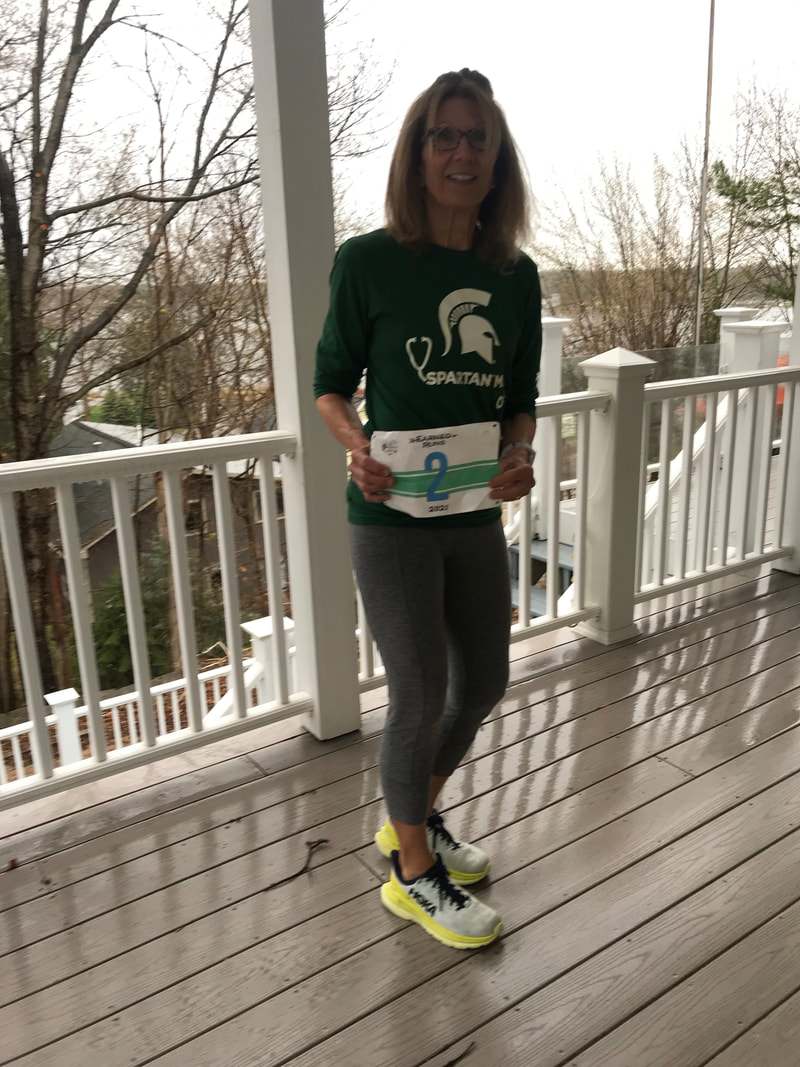BLOG
|
|
DO YOU SOMETIMES WORRY THAT RUNNING IS A FORCED ACTIVITY? An unnatural, repetitive habit that represents a risk for injury? That you “just do it” without thinking? Some of your non-exercising acquaintances might occasionally joke with you about this.
Perhaps we can learn something about reasons for running from mice! Scientists have wondered whether their putting running wheels in animal cages has permitted healthy activity in, or fostered unhealthy habits upon, captive research subjects. Because exercise is increasingly valued for its ability to prevent or possibly cure certain diseases, laboratory investigations along these lines have also increased, oftentimes utilizing mice. A study by Dutch scientists set out to determine whether this practice was helping or hurting animals involved in such experiments. The results were published in an article in 2014. “Voluntary wheel running“, the introduction to the article says, is “used in many scientific disciplines as a tool to stimulate and measure activity”. At issue, these scientists felt, was whether wheel running is natural or forces mice into unnatural behavior, like neurosis or stereotypy. This last-named behavior is defined as “a repetitive or ritualistic movement, posture, or utterance”, with examples including body rocking, self-hugging, and marching in place, per an entry in Wikipedia. The question was whether “running wheel activity is a pathological phenomenon that develops only in captivity.” To answer it, scientists set up 2 cage-like running-wheel observation sites where wild, free-living mice might access them, protected from the elements. One was in a spacious, green, urban park. The other was a dune setting which humans could not access. Entry by animals larger than a rat was made difficult. From October 2009 to February 2013 (urban setting) and June 2011 – January 2013 (dune) the comings and goings of animals in the wheel was detected by an infrared passive motion sensor and recorded by a video camera. Of the 200,000 recordings of visits made over the 3 years, 12,000 were analyzed. Motion generated on the outside of the wheel was excluded from analysis. A mouse food tray was present initially, but not present October 2011–February 2103. The results showed that most visits were made by feral mice; shrews, rats, frogs, slugs, and snails also dropped by. Feral mice ran year-round, with activity beginning to increase in the spring and peaking in late summer in the urban area, and beginning in summer and peaking in late autumn in the dune. Although some animals seemed to initiate movement accidentally, others (mice and shrews) entered and ran, exited, then re-entered “again within minutes”, to continue wheel running. Wheel running mice were “primarily” juveniles who ran about as much as 200 day-old laboratory mice. Complicated analyses indicated that the wheel running distances covered by the wild mice may have been comparable to those covered by research animals. In 20% of the cases mice ran for more than 1 minute, with a maximum duration of 18 minutes!!! There was no slow walking, just running. In terms of circadian patterns, there was more nighttime running as expected, as mice are nocturnal animals. Very slightly more nighttime running in the dunes mice compared with their urban counterparts suggests light pollution may have effected animal behavior. Although FOOD was placed in proximity to the wheels at first, the data did not indicate food reward affected day or night running. “Existing explanations” the paper states, “are that wheel running is a consummatory behaviour satisfying a MOTIVATION such as PLAY or ESCAPE.” “Our results indicate that while the number of visits to the recording site decreased when no food was present, the fraction of visits including wheel running increased. This implies that wheel running can be experienced as REWARDING even without an associated food reward, suggesting the importance of motivational systems unrelated to foraging.” Does any of this seem vaguely familiar to you? If you notice a running path near your home, office, travel location, school, do you jump on and off as you can? Is running something you initially take-up to be able to take-in more calories without gaining weight, but continue with because it provides play or escape time? Do you run more after work in the dark if there’s an accessible well-lighted area? Does your outdoor running effort start to increase in the spring or early summer and peak in late summer or autumn? Not all humans love to run; it’s probable that not every mouse loves running. If provided with the human version of a “wheel” (nice running path or trail, fair weather, time away from unpleasant duties, encouragement of friends or family, or new shoes, for example) are we more likely to run for the joy of experiencing a “consummatory behavior”? I say YES! Start planning now to set up conditions that will allow you to take advantage of everything spring, summer, and autumn offer in terms of enjoyable outdoor exercise. Run, walk, hike, ruck, swim, golf, waterski, play tennis, surf, and cycle. Mix activities or binge on one. Pay attention to preventing injury with supporting activities like stretching, balance and strength training, flexibility work, and recovery time. Maybe we can escape the mentality of being trapped in the ‘cage’ of everyday routine If, like mice, when we see a ‘wheel’ we get on it and run. And don’t spend time worrying that habitual running is unnatural. RUN HAPPY! ScienceNews reported on the study: https://www.sciencenews.org/blog/wild-things/mice-really-do-run-wheels . http://rspb.royalsocietypublishing.org/content/281/1786/20140210 https://en.wikipedia.org/wiki/Stereotypy
0 Comments
Your comment will be posted after it is approved.
Leave a Reply. |
BRIDGE TO PHYSICAL SELF
Running, walking, and fitness activities enable us to experience our physical selves in a world mostly accessed through use of fingers on a mobile device. AuthorEARNED RUNS is edited and authored by me, runner and founder. In 1978 I began participating in 10K road races before 5Ks were common. I've been a dietitian, practiced and taught clinical pathology, and been involved with research that utilized pathology. I am fascinated with understanding the origins of disease as well as health and longevity. Archives
November 2023
CategoriesNew! Search Box
Earned Runs is now searchable! Check it out...
|


 RSS Feed
RSS Feed